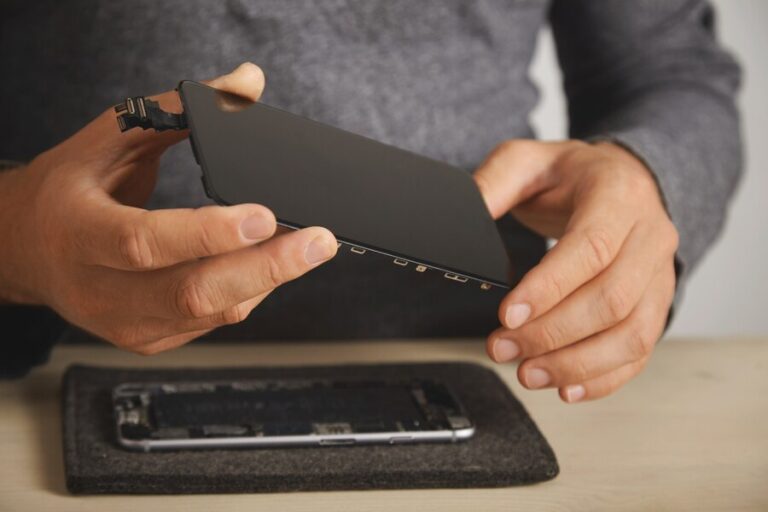Commercial drains play a crucial role in maintaining the functionality and efficiency of businesses and industrial facilities. From restaurants and hotels to manufacturing plants and office buildings, properly functioning drains are essential for daily operations. However, over time, commercial drains can become clogged, blocked, or damaged due to various factors such as grease buildup, sediment accumulation, root intrusion, or structural defects. In this comprehensive exploration, we’ll delve into two essential techniques for maintaining commercial drains: sewer jetting and camera inspections. We’ll examine the benefits of each method, their applications in commercial drain maintenance, and how businesses can maximize their effectiveness to ensure smooth operations and prevent costly disruptions.
Commercial Drain Maintenance
Before delving into sewer jetting and camera inspections, it’s essential to understand the importance of commercial drain maintenance and the challenges businesses face in maintaining their drainage systems.
1. Importance of Drain Maintenance
Commercial drains are subjected to high volumes of wastewater, debris, and other substances daily, making them susceptible to clogs, blockages, and structural issues. Regular maintenance is essential to prevent these problems and ensure the smooth operation of businesses and industrial facilities. For expert assistance, contact reputable commercial plumbers near me.
2. Challenges in Drain Maintenance
Maintaining commercial drains presents several challenges for businesses, including identifying hidden blockages or defects, accessing hard-to-reach areas of the drainage system, and minimizing downtime during maintenance activities. Traditional methods of drain cleaning and inspection may be ineffective or time-consuming, leading to operational disruptions and increased costs.
Sewer Jetting: The Power of High-Pressure Cleaning
Sewer jetting, also known as hydro-jetting or water jetting, is a highly effective method of cleaning commercial drains using high-pressure water streams. This technique utilizes specialized equipment to blast away debris, grease, and other obstructions from the interior walls of pipes, restoring them to optimal condition.
1. How Sewer Jetting Works
Sewer jetting equipment consists of a high-pressure pump, hoses, and a nozzle attachment designed to deliver concentrated water streams at pressures ranging from 1,500 to 4,000 pounds per square inch (PSI). The nozzle’s configuration creates a forward and backward jetting action, effectively scouring the interior surfaces of drain pipes and dislodging accumulated debris.
2. Benefits of Sewer Jetting
Sewer jetting offers several key benefits for commercial drain maintenance:
- Thorough Cleaning: The high-pressure water streams generated by sewer jetting equipment can penetrate deep into drain pipes, removing stubborn blockages, grease buildup, and sediment deposits.
- Environmentally Friendly: Unlike chemical drain cleaners, sewer jetting relies solely on water, making it an environmentally friendly option for drain cleaning. It eliminates the need for harsh chemicals that can harm pipes and the environment.
- Preventative Maintenance: Regular sewer jetting helps prevent future clogs and blockages by keeping drain pipes clean and clear of debris. It prolongs the lifespan of drainage systems and reduces the risk of costly repairs or replacements.
3. Applications of Sewer Jetting
Sewer jetting is suitable for a wide range of commercial drain applications, including:
- Restaurant Drains: Grease buildup is a common issue in restaurant drains due to the disposal of cooking oils and food scraps. Sewer jetting effectively removes grease deposits and prevents drain blockages.
- Industrial Drains: Manufacturing facilities and industrial plants often encounter sediment buildup and debris accumulation in their drainage systems. Sewer jetting can clear these obstructions and restore drainage efficiency.
- Municipal Sewer Lines: Municipalities use sewer jetting to clean and maintain large-scale sewer lines and storm drains, ensuring proper wastewater management and preventing backups or overflows.
Camera Inspections: Gaining Insight with Advanced Technology
Camera inspections, also known as drain or sewer video inspections, utilize advanced camera technology to visually inspect the interior of drain pipes and identify blockages, defects, or other issues.
1. How Camera Inspections Work
Camera inspection equipment consists of a high-resolution camera attached to a flexible cable that is inserted into the drain pipe. The camera transmits live video footage to a monitor, allowing technicians to visually inspect the condition of the pipe in real time. The footage can also be recorded for further analysis and documentation.
2. Benefits of Camera Inspections
Camera inspections offer several advantages for commercial drain maintenance:
- Accurate Diagnosis: Camera inspections provide visual confirmation of drain issues, allowing technicians to accurately diagnose the cause of problems such as clogs, leaks, or tree root intrusion.
- Cost-Effective: By pinpointing the exact location and nature of drain issues, camera inspections help minimize guesswork and unnecessary excavation, reducing repair costs and minimizing disruption to business operations. If you’re in need of plumbing repair near me, camera inspections offer an efficient solution to address your drainage concerns.
- Preventative Maintenance: Regular camera inspections allow businesses to detect and address drain issues before they escalate into larger problems, such as pipe collapses or sewer backups. This proactive approach helps prevent costly repairs and extends the lifespan of drainage systems.
3. Applications of Camera Inspections
Camera inspections are suitable for various commercial drain applications, including:
- Preventative Maintenance: Conducting regular camera inspections as part of a preventative maintenance program allows businesses to identify and address potential drain issues before they escalate.
- Troubleshooting: When drain problems occur, camera inspections can quickly pinpoint the cause of the issue, whether it’s a clog, blockage, root intrusion, or structural defect, allowing for targeted repairs.
- Quality Assurance: Camera inspections can be used to verify the quality of drain cleaning or repair work, ensuring that issues have been properly addressed and providing peace of mind to businesses and property owners.
Maximizing Benefits: Integrating Sewer Jetting and Camera Inspections
While sewer jetting and camera inspections are powerful tools on their own, businesses can maximize their benefits by integrating them into a comprehensive drain maintenance strategy.
1. Proactive Maintenance Plan
Developing a proactive drain maintenance plan that includes regular sewer jetting and camera inspections can help businesses prevent drain issues before they occur. By staying ahead of potential problems, businesses can minimize downtime, reduce repair costs, and maintain optimal drainage system performance.
2. Data-Driven Decision Making
Utilizing the insights gained from camera inspections, businesses can make informed decisions about drain cleaning, repairs, and maintenance. By having a clear understanding of the condition of their drainage systems, businesses can prioritize and allocate resources more effectively, ensuring that critical issues are addressed promptly.
3. Continuous Improvement
Regular sewer jetting and camera inspections provide businesses with valuable data that can be used to continuously improve their drain maintenance practices. By analyzing trends, identifying recurring issues, and implementing corrective actions, businesses can optimize their drain maintenance strategies over time, leading to more efficient operations and reduced costs.
To Sum Up
In conclusion, sewer jetting and camera inspections are invaluable tools for maintaining the functionality and efficiency of commercial drains. By utilizing these techniques proactively, businesses can prevent costly disruptions, extend the lifespan of their drainage systems, and ensure smooth operations. By integrating sewer jetting and camera inspections into a comprehensive drain maintenance strategy, businesses can maximize their benefits and optimize the performance of their drainage systems for years to come.







